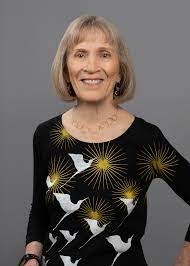Professor Dr. Claudia Goldin – Winner of Nobel Prize 2023 for Economic Sciences – Asrar Qureshi’s Blog Post #892
Professor Dr. Claudia Goldin – Winner of Nobel Prize 2023 for Economic Sciences – Asrar Qureshi’s Blog Post #892
Dear Colleagues! This is Asrar Qureshi’s Blog Post #892 for Pharma Veterans. Pharma Veterans aims to share knowledge and wisdom from Veterans for the benefit of Community at large. Pharma Veterans Blog is published by Asrar Qureshi on WordPress, the top blog site. Please email to asrar@asrarqureshi.com for publishing your contributions here.
 |
| Professor Dr. Claudia Goldin |
 |
| Credit: Mehmet Turgut Kirkgoz |
 |
| Credit: Swastik Arora |
News – Claudia Goldin Wins Nobel in Economics for Studying Women in the Workforce – New York Times
Similar news flashed across many platforms as Professor Goldin was chosen for Nobel Prize. She is only the third woman to have won the Nobel Prize in Economics, and the first one to win it solo. Nobel Prize carries a prize amount of 11 million Swedish crowns (US$ 986,000) besides being the highest award recognizing the most valuable contribution by people in selected fields.
The Nobel jury said that ‘her work has advanced our understanding of women’s labor market outcomes’. And that ‘Goldin has provided the first comprehensive account of women’s earnings and labor market participation through the centuries. Her research reveals the causes of change, as well as the main sources of the remaining gender gap’.
Professor Claudia Goldin, is the Henry Lee Professor of Economics at Harvard University. Her academic journey began at Cornell University, where she earned her bachelor's degree in economics. Following her Ph.D. from the University of Chicago, she embarked on a distinguished career, teaching at prestigious universities like the University of Wisconsin-Madison and the University of Pennsylvania before joining Harvard in 1990.
Early in her career, Goldin focused on understanding the rise of mass schooling in the United States, analyzing the economic and social factors that led to increased educational attainment. This research laid the groundwork for her later work on gender and the labor market.
Goldin's pioneering research has transformed our understanding of gender inequality in the workforce. Her work delves into the historical evolution of the gender pay gap, analyzing factors like changes in family structure, female labor force participation, and occupational segregation.
One of her most significant contributions is the "Goldin-Katz model," which explains how the influx of women into traditionally male-dominated occupations can initially widen the gender pay gap before ultimately leading to its closure. This model has been widely adopted and continues to be influential in understanding the dynamics of gender inequality in the labor market.
Goldin's impact extends beyond her academic publications. She has served as president of the American Economic Association and the Economic History Association, playing a key role in shaping the research agenda of both fields. She is also a prolific writer and public speaker, actively engaging with policymakers and the public on issues related to gender and the economy.
Professor Dr. Goldin’s Work
Goldin’s research was one of the first in economics to acknowledge women’s work. It shed light on the historical trend in wage gap and factors contributing to it. Women are drastically under-represented in the world of work, and while their numbers are growing, wages are much lower than those of men.
Goldin’s study of data over a 200-year period showed a U-shaped curve: female participation at first declined in the 19th century but began to rise again in the 20th century. While women were earlier involved in agricultural activities, they dropped out during industrialization. With the rise of the services sector and access to contraceptive pills, women started participating in the job market. Goldin’s findings also showed that despite this, the gender gap in earnings remained high—in fact, the difference between men and women workers in the same occupation rose with the birth of the first child.
Goldin’s research showed two factors as key to bringing more women into the workforce: higher education investments and raising age of marriage. Family life shaped wage gaps—it widened when mothers cut their work hours. Gender gap could be narrowed or closed “if firms did not have an incentive to disproportionately reward individuals who laboured long hours and worked particular hours", Goldin argued. Such changes were missing from the health, corporate, financial and legal sectors, she pointed out.
In her speech on the eve of receiving the prize on 8th December 2023, she presented some of her main findings in thirty minutes.
• Employment to population ratios for women 25-54 years are high almost everywhere in 2022.
• By 1982, more females than males were graduating college.
• The average woman does unpaid household and care work more than does the average male.
• Median age at first marriage soared for college graduate women born in 1950s.
• Females graduating from professional schools/colleges soared in 1970s and !980s.
• College graduate women professions changed greatly in the same period, from teaching, nursing, social work to lawyers, managers, doctors, professors, scientists.
• Relative earnings of women greatly increased after 1980; also in comparison to men thereby reducing the wage gap.
• Women did everything right, and then work got greedy – professions like law, business, corporates demanded longer hours of working where men surpassed women because they did not carry the family and children’s liability in the way the women did.
• When couples choose ‘couple Inequity’ in choosing less flexible or more flexible jobs, they create ‘gender inequality’. The reverse is also true.
Pakistan Situation
As a society, we have passed through the same stages as pointed out by Professor Goldin for the US. We have additional issues which may be mentioned here in passing.
• Women do more work, more labor, more service than men in our society. However, their work is not recognized because of male-dominated thinking of centuries. Women in several segments of society are no better than slaves who are supposed to serve, provide pleasure on demand, bear children, raise children and take care of large families.
• Women do not have the freedom to choose education, careers, life partners, and much else.
• In the more urban areas, women are struggling and marching for their rights while men look at them with a mix of awe, amusement, impunity, and contempt.
• On the whole, we are a confused society which has lost its direction and is not even trying to search for it.
Concluded.
Reference:
https://www.nobelprize.org/prizes/economic-sciences/2023/goldin/lecture/
https://www.nytimes.com/2023/10/09/business/economy/claudia-goldin-nobel-prize-economics.html
https://blogs.lse.ac.uk/businessreview/2023/10/20/what-claudia-goldin-taught-economics-about-women-labour-markets-and-pay-gaps/
https://www.livemint.com/news/world/nobel-lessons-from-claudia-goldin-s-findings-11696961953228.html



Comments
Post a Comment